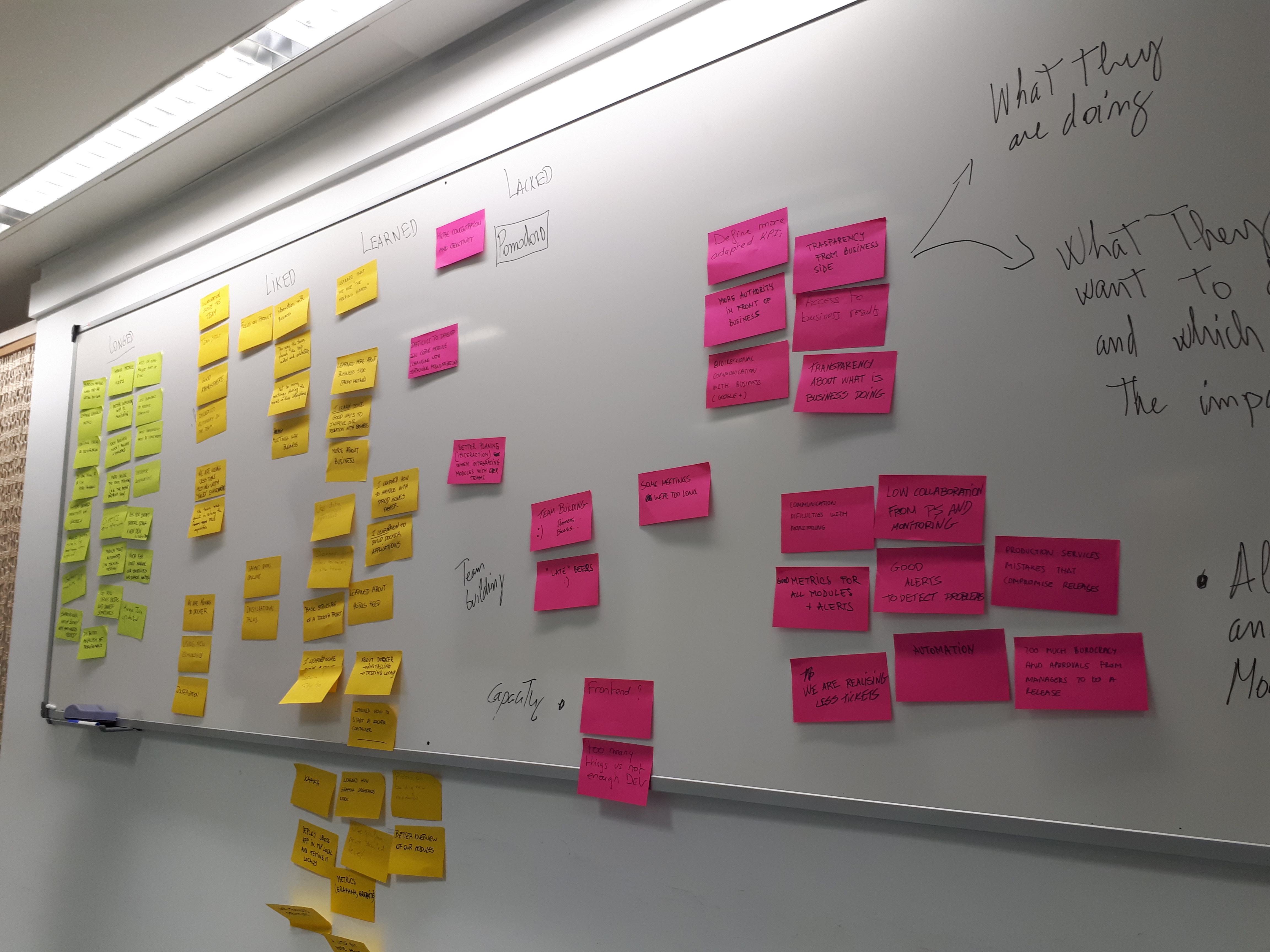Retrospectives - Learning from the past
Look back in the last month and see what you did, which projects you participated in, which meetings you attended, how are the dinamics inside your team, what is the relationship with other stakeholders, what was expected from you and how you did perform.
The purpose
All those questions should come to your mind when you participate in a retrospective. It’s a good moment to stop and think about everything. The purpose is not to blame other mates of your team or to regret this or that to your mates. The retrospective has to be constructive never destructive.
In those conversations can help to use stickies, this way all the people can express their thoughs and suggestions and not being influenced by the opinions of the others, because people write at the same time and when time is up people stand up to stick stickies in the wall.
4L’s technique
A good way to drive the session can be to separate the discussion using the 4 L’s technique:
- What did you like?
- What did you learn?
- What was lacking?
- What do you long for going forward?
What you liked is obvious that refers to talk about the things that made you happy in the last month. This helps people to start the session with a positive mindset and see the good things that are happening around.
The second section is related with what every individual learned in the last month. It can be a new technology, a new way of work, a specific tool … whatever thing that comes to your mind.
The third one is what you lacked in the last month. Communication problems, wrong objectives, no code review sessions, lack of resources, too many meetings, interruptions, difficulties to manage the upstream, missing tools… all can fit to this section of the conversation.
The last one is … well no need to explain it, right? you can guess :D
Grouping stickies
So, in the end you will have your whiteboard with stickies that will be similar one to each others. The work should be group the similar stickies to find out what are the common issues inside the team that everybody points that are important, and highlight them. If there’s a sticky that is isolated from the others maybe is something that some member of the team has pointed that nobody else has and maybe deserves to mention also
Next steps - Actions
The most important think of the retrospetive is to come out from the meeting with a list of actions of things that have been identified that need to improve in the future related with the environment, things related with the team, the individuals… every aspect that the team is willing to be successful at.
Conclusion
Retrospectives are a really good tool to learn from the past projects, situations where the team has identified problems that should be addressed. It also helps engage the members of the team becuase they can participate and express their opinions about the team performance and feel that their voice is important. I definitely encourage teams to practise retrospectives because is a good way to check the health of the team and come up with actions to improve the performance of it.
(Picture of the last retrospective which I was involved)


Comments